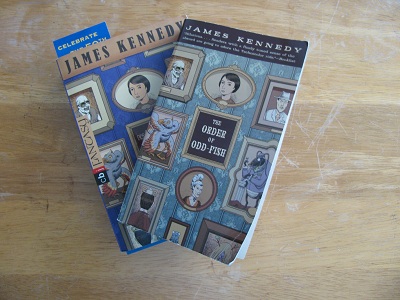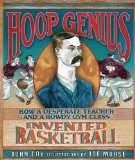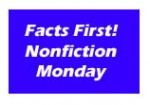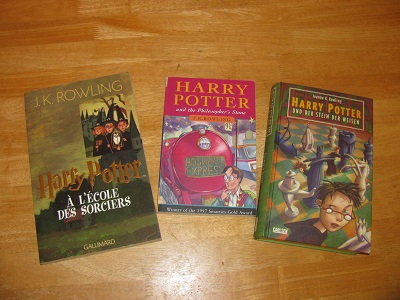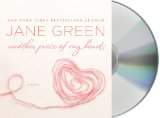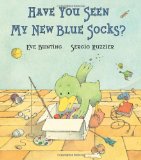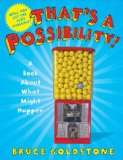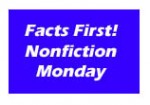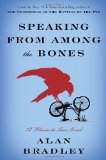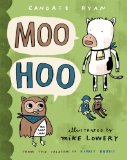Sonderling Sunday – Unusual Musical Instruments
It’s time for Sonderling Sunday! That time of the week when I play with language by looking at the German translations of children’s books. Sort of a handy phrase book of things you never knew you wanted to know how to say!
This week, it’s back to the book that started it all, James Kennedy‘s The Order of Odd-Fish, otherwise known as Der Orden der Seltsamen Sonderlinge. I left off right at the start of a short section about an extremely unusual musical instrument, which is on page 175 in English, Seite 221 auf Deutsch.
Jumping in to some fun phrases and interesting words:
“specialties” = Fachgebiete (“practice areas”)
“expertise” = Fachwissen (“specialist knowledge”)
“odd musical instruments” = seltsamer Musikinstrumente
“strange animals” = sonderbare Tiere
“milling around” = strömten (“flowed”)
“at the top of the stairs” = auf dem oberen Treppenabsatz (“at the top stairs-section”)
“blubbery thing” = blubberndes Ding
(Hmm. A little disappointing, that. Who knew it was almost the same in German?)
“dark yellow” = ockerfarben
“wriggling tubes” = windenden Röhrchen
“a single bored-looking red eye” = einem einzelnen, gelangweilt blickenden roten Auge
“as it cascaded down the stairs” = als es die Treppen hinabglitt
“shocking enough” = schockierend genug
“most shocking thing” = das Erschreckendste
“huge jaws” = gewaltiges Maul
“orifices” = Körperöffnungen (“body-openings”)
“can emit sounds” = Klänge erzeugen können
“a full-grown man may fit comfortably in its esophagus!”
= In seiner Speiseröhre findet ein ausgewachsener Mann bequem Platz!
(“in its meal-eyelets finds a grown man easily place!”)
“climbing” = geklettert
“most unusual music” = ungewöhnlichste Musik
“Out of the question” = Das kommt überhaupt nicht infrage
(“That comes at all not in-question”)
“squeeze or pinch” = drücken oder kneifen
“couldn’t hurt” = Das kann ja nicht schaden.
“most horrible noises” = der schrecklichsten Geräusche
And as a climax to this section:
“a howling, farting crescendo of gurgling belches and groans”
= ein heulendes, furzendes Crescendo von gurgelnden Rülpsern und Gestöhne
“Of course, it needs a little work.”
= Selbstverständlich bedarf es noch einiger Übung.
Lovely! Won’t it be handy, the next time you visit Germany, to be able to describe ein heulendes, furzendes Crescendo von gurgelnden Rülpsern und Gestöhne? Or at least to say it’s ungewöhnlichste Musik.
Sometimes I feel like I’m developing Fachgebiete nearly as useful as that of der Orden der Seltsamen Sonderlinge.
Be sure to mention in the comments your abundant opportunities to use these phrases this week!
